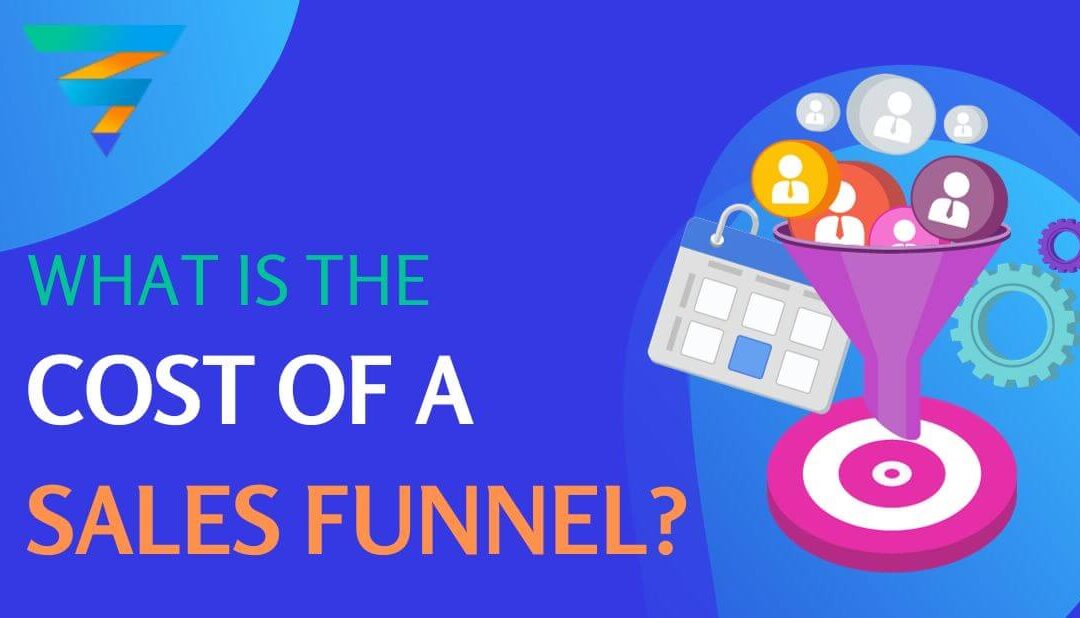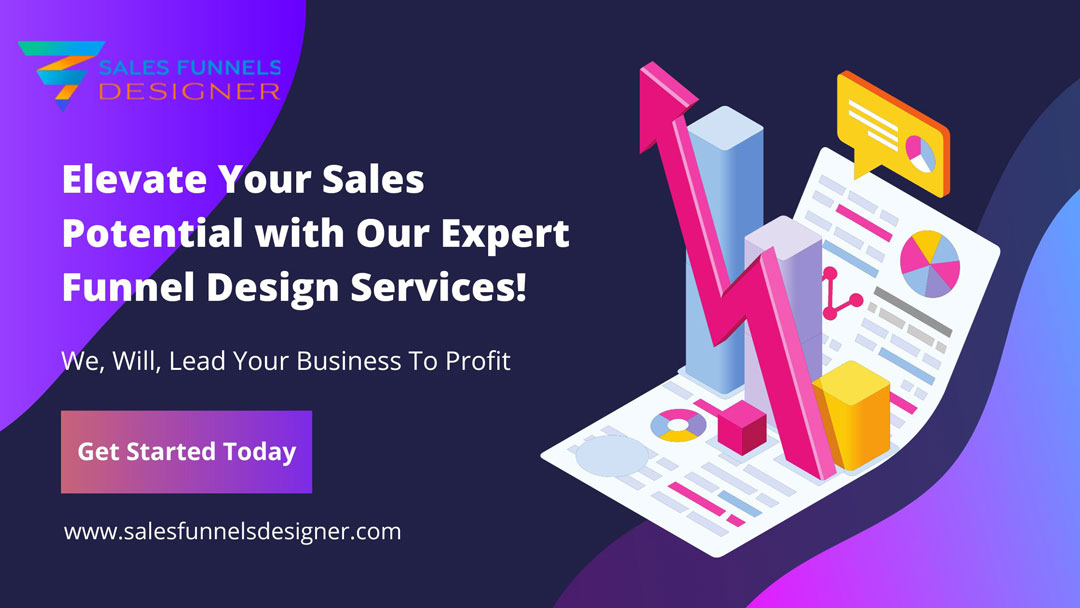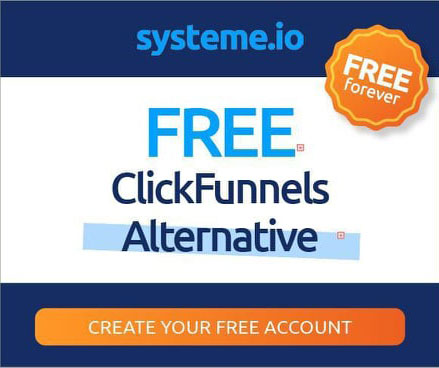Introduction
In the ever-evolving realm of digital marketing, the concept of a sales funnel has emerged as a pivotal tool for businesses seeking to thrive in the online marketplace.
A sales funnel isn’t just a buzzword;
it’s the strategic framework that guides potential customers through their journey from initial awareness to the ultimate conversion, whether it’s a purchase, sign-up, or any desired action.
Sales funnels are the invisible architects of online success, shaping the way businesses engage with their audiences and, ultimately, their bottom line.
However, understanding the intricacies of a sales funnel, particularly the budgetary aspects, can be the difference between an effective marketing strategy and a costly misstep.
In this comprehensive guide, we delve into the critical question of “How Much Does It Cost to Set Up a Sales Funnel?”
Our primary focus is to shed light on the financial considerations involved in crafting a sales funnel tailored to your unique needs.
Whether you’re a startup aiming to establish a digital presence or a seasoned business looking to optimize your online marketing efforts, this article will provide you with the insights and guidance needed to make informed decisions.
But, as we navigate through the world of sales funnels and budgets, it’s essential to keep search engine optimization (SEO) in mind.
Effective SEO practices ensure that your content reaches a wider audience and drives organic traffic to your website.
Throughout this article, we’ll also touch upon SEO strategies to help you make your content more discoverable and valuable to your target readers.
So, let’s embark on a journey to demystify the costs of setting up a sales funnel, all while staying search engine-friendly and ensuring your insights reach the right audience.
The Components of a Sales Funnel
A well-structured sales funnel is a strategic pathway designed to guide potential customers through a series of stages, each playing a critical role in the buying process.
Understanding these stages and their specific components is essential for creating an effective and efficient sales funnel.
In this section, we’ll delve into the key components of a sales funnel, highlighting the awareness, interest, decision, and action stages, and elucidating their respective roles in the customer journey.
1. Awareness Stage
At the top of the sales funnel is the awareness stage. Here, the primary goal is to capture the attention of your target audience and make them aware of your products or services.
Key components of this stage include:
- Content Marketing: Engaging content, such as blog posts, videos, or social media posts, serves as a powerful tool to draw visitors to your website or landing page.
- Search Engine Optimization (SEO): Optimizing your content for search engines helps potential customers discover your offerings organically.
- Paid Advertising: Paid campaigns, like pay-per-click (PPC) ads, can quickly boost your visibility to a broader audience.
- Social Media Engagement: Interacting with your audience on social platforms is a valuable way to build brand recognition.
- Role: The awareness stage is about creating a strong first impression and building initial interest in your brand. It’s the point at which potential customers become acquainted with what you offer.
2. Interest Stage
Once prospects are aware of your brand, they move into the interest stage. This is where you deepen their engagement and encourage them to explore your products or services further.
Key components include:
- Educational Content: Providing informative and valuable content helps potential customers understand their pain points and the solutions you offer.
- Email Marketing: Sending targeted emails to nurture leads and provide them with relevant information.
- Lead Magnets: Offering free resources, like e-books or webinars, in exchange for contact information can help build your email list.
- Role: The interest stage focuses on nurturing leads, building trust, and showcasing the value your products or services provide. Prospects are now considering your offerings more seriously.
3. Decision Stage
In the decision stage, potential customers are evaluating whether to make a purchase. This is a critical phase where they need convincing that your solution is the best choice. Key components include:
- Product Information: Detailed product or service descriptions, pricing, and benefits help prospects make informed decisions.
- Testimonials and Reviews: Social proof in the form of reviews and testimonials can alleviate doubts and build trust.
- Comparison Content: Providing comparisons with competitors can highlight your unique selling points.
- Role: The decision stage is where prospects are making a choice, and your aim is to persuade them that your solution is the right one for their needs.
4. Action Stage
The final stage of the funnel is the action stage. Here, the objective is to convert prospects into customers. Key components include:
- Clear Call to Action (CTA): A prominent and compelling CTA guides prospects toward the desired action, whether it’s making a purchase, subscribing, or scheduling a consultation.
- Checkout Process: Ensure a smooth and intuitive checkout process for e-commerce businesses.
- Follow-Up and Remarketing: After conversion, continue engagement with post-purchase offers and ongoing communication.
- Role: The action stage is where the prospect becomes a customer. It’s the culmination of the funnel and the point where your efforts result in a successful conversion.
A sales funnel is a dynamic process consisting of these four key stages, each with specific components and roles in guiding prospects through the buying journey.
Budget Considerations: Navigating the Financial Landscape of Your Sales Funnel Project
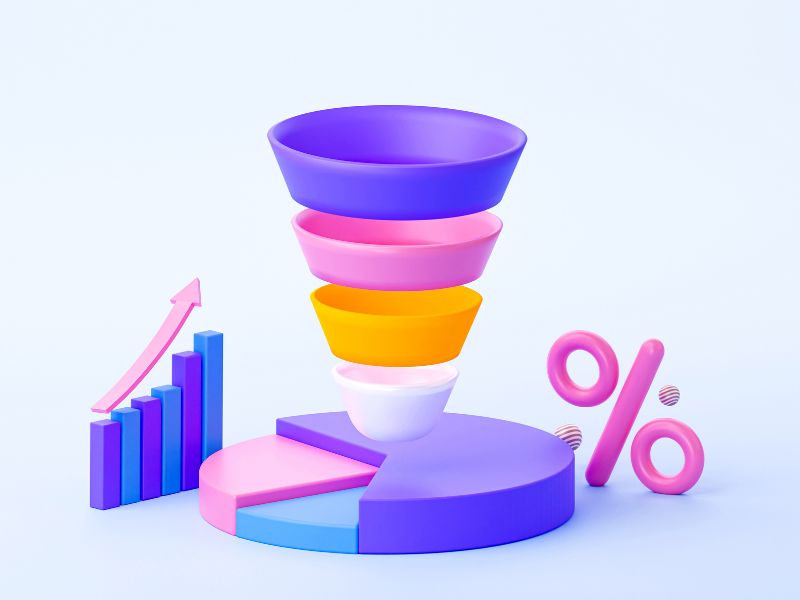
Setting up a successful sales funnel is not just about crafting a strategic pathway for your audience—it’s also about managing your resources wisely.
One of the fundamental aspects of this management is establishing a well-thought-out budget.
In this section, we will delve into the significance of budget considerations and explore the factors that influence the financial planning of your sales funnel project.
The Role of a Budget in Sales Funnel Development
A budget serves as the financial blueprint for your sales funnel project. It is the foundation upon which you will build, test, and optimize the various elements of your funnel.
Here’s why it’s crucial:
- Resource Allocation: Your budget helps you allocate resources efficiently. It ensures that your financial resources are directed to the most critical aspects of your sales funnel, helping you prioritize your spending.
- Cost Control: Without a budget, it’s easy to overspend on certain elements while neglecting others. A well-defined budget keeps you in control of your expenses.
- Measurable Results: By setting a budget, you can measure the return on investment (ROI) for your sales funnel. This allows you to assess the performance and effectiveness of your marketing efforts.
Factors Influencing Your Sales Funnel Budget
The cost of setting up a sales funnel can vary significantly from one business to another. Several factors come into play when determining the budget, including:
- Business Goals: The objectives you aim to achieve with your sales funnel will impact the budget. If your goal is to generate leads, it may require a different budget than a goal focused on direct sales.
- Target Audience: The complexity of your target audience and their preferences can influence your budget. Creating a funnel for a broad, diverse audience may require additional resources compared to a niche market.
- Industry and Competition: Different industries have varying levels of competitiveness. Highly competitive niches may require more investment to stand out and capture the attention of potential customers.
- Scale of the Funnel: The size and complexity of your sales funnel will naturally affect the budget. Multi-stage funnels with intricate segmentation may require more investment than simpler ones.
- Content and Design Requirements: Quality content and design are essential for a successful funnel. The level of sophistication and professional expertise required in these areas will contribute to your budget.
- Advertising and Promotion: If you plan to use paid advertising or promotional campaigns to drive traffic to your funnel, the budget for these activities will be an important consideration.
The budget for your sales funnel project is not a one-size-fits-all concept. It is a highly flexible and adaptable component of your marketing strategy.
Taking into account your business goals, target audience, industry, funnel scale, content and design requirements, and promotional efforts, you can develop a budget that aligns with your unique needs and objectives.
It’s essential to approach budgeting as a strategic tool that empowers your sales funnel’s success by guiding your financial decisions throughout the project.
Cost Breakdown: Navigating the Financial Aspects of Sales Funnel Setup
When it comes to setting up a sales funnel, understanding the potential costs involved is a crucial step in planning your digital marketing strategy.
A well-structured sales funnel can significantly impact your conversion rates and ROI, but it’s essential to be mindful of the expenses associated with its creation and optimization.
In this section, we will break down the key cost components to give you a comprehensive view of what to expect.
1. Funnel Software: Costs of Using Funnel-Building Tools or Platforms
The foundation of any sales funnel lies in the software or platform you choose to build and manage it.
While there are various options available, the cost of funnel software can vary widely. Here’s what you need to consider:
- Subscription Costs: Many funnel-building tools offer subscription plans with different pricing tiers. Costs can range from free (for basic plans) to hundreds of dollars per month for more advanced features.
- Additional Features: Some software providers offer add-ons or premium features that may come at an extra cost. Evaluate which features align with your funnel’s requirements.
2. Content Creation: Expenses Related to Creating Compelling Content
Compelling and engaging content is at the heart of your sales funnel.
The content you create at each stage—awareness, interest, decision, and action—plays a pivotal role in guiding your prospects.
Here are potential costs to consider:
- Content Creation Costs: Whether you’re producing blog posts, videos, infographics, or email sequences, there may be expenses associated with content creation, such as hiring writers, videographers, or designers.
- Graphic Design and Multimedia: High-quality visuals and multimedia content can elevate your funnel’s effectiveness. Budget for graphic design or multimedia production if it’s part of your content strategy.
3. Design and Development: Costs Associated with Hiring Designers or Developers
The visual and technical elements of your sales funnel can greatly influence its success. Depending on your skills and resources, you may need to consider:
- Web Design: If you’re building a custom landing page or website as part of your funnel, you might need to hire a web designer.
- Graphic Design: Professional graphics and branding elements can help create a consistent and visually appealing experience for your audience.
- Development and Coding: Complex funnel features or integrations may require the expertise of a developer.
4. Advertising and Promotion: Budget Considerations for Paid Advertising
To drive traffic to your sales funnel, you’ll likely invest in advertising and promotional efforts. These costs can vary based on your marketing strategy and goals:
- Paid Advertising: Expenses for running paid campaigns on platforms like Google Ads, Facebook Ads, or other advertising networks.
- Social Media Promotion: Budget for promoting your funnel through sponsored posts or social media advertising.
- Email Marketing: Costs associated with email marketing campaigns to nurture leads through the funnel.
5. Analytics and Testing: Expenses for Tracking and Optimizing Your Funnel’s Performance
Continuous improvement and optimization are fundamental to a successful sales funnel. You’ll need to allocate resources for:
- Analytics Tools: The cost of using analytics tools to track user behavior, conversions, and other key metrics.
- A/B Testing: Expenses related to conducting A/B tests and making data-driven improvements to your funnel.
Understanding the breakdown of these potential costs is crucial for creating a realistic budget and setting achievable goals for your sales funnel project.
It’s also worth noting that the actual expenses can vary widely based on your specific business, industry, and objectives
DIY vs. Hiring Professionals: Making the Right Choice for Your Sales Funnel
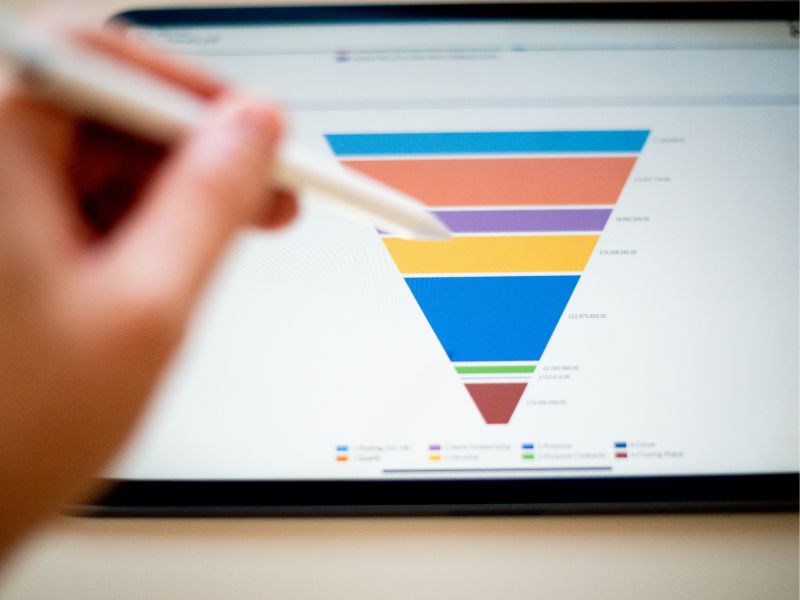
One of the crucial decisions you’ll face when setting up a sales funnel is whether to embark on a do-it-yourself (DIY) journey or enlist the help of professional services.
Each option comes with its own set of pros and cons, and understanding the nuances can help you make the best choice for your business.
Pros and Cons of the DIY Approach
Pros:
- Cost Savings: Perhaps the most appealing aspect of the DIY approach is the potential for cost savings. You can get started with many free or low-cost funnel-building tools and platforms. If you have some design and technical skills, you can create basic funnels without hiring professionals.
- Full Control: DIY allows you to have complete control over the design, content, and execution of your sales funnel. You can make instant changes, experiment, and adapt your strategy as needed.
- Learning Opportunity: Building a sales funnel on your own is a valuable learning experience. It provides you with a deep understanding of the funnel’s mechanics, which can be beneficial in the long run.
Cons:
- Learning Curve: Creating an effective sales funnel can be complex, especially for beginners. The learning curve may lead to errors, and it can be time-consuming to figure out what works best for your business.
- Limited Expertise: Unless you have a background in digital marketing and web design, your DIY funnel may lack the finesse and expertise that professionals can bring to the table.
Pros and Cons of Hiring Professional Services
Pros:
- Expertise: Professional funnel designers and marketers have extensive experience in creating and optimizing sales funnels. They understand the psychology of conversion and can apply best practices to maximize results.
- Time Efficiency: Hiring professionals can significantly reduce the time it takes to get your funnel up and running. They have the knowledge and tools to expedite the process.
- Customization: Professionals can tailor your sales funnel to your specific business needs, ensuring that it aligns perfectly with your brand and goals.
Cons:
- Cost: Professional services come at a cost, which can be higher than a DIY approach. However, it’s essential to consider this as an investment in achieving better results and, ultimately, higher returns.
- Less Control: While working with professionals provides expertise, it may involve giving up some control over the funnel’s day-to-day management. However, communication with your hired experts can address this concern.
Making the Right Choice
The decision to go DIY or hire professionals depends on your budget, time, and expertise.
Here are some key considerations:
- If you have limited resources and are willing to invest the time to learn and experiment, a DIY approach can be a cost-effective way to get started.
- If you value efficiency, expertise, and a customized approach, hiring professionals is a wise choice to ensure your funnel operates at its full potential.
- Some businesses may even find a middle ground, starting with a DIY approach and gradually transitioning to professional services as their business grows and profits increase.
Both DIY and professional services have their place in the world of sales funnel creation.
The decision ultimately rests on your unique business circumstances and goals.
Tips for Cost-Effective Funnel Setup
Creating a cost-effective sales funnel doesn’t mean cutting corners; it’s about maximizing the value of every dollar spent.
Here are some practical tips and strategies to help you keep your funnel setup costs under control while still achieving your goals:
1. Set Clear Objectives
Before you start building your sales funnel, define clear and achievable objectives. Knowing exactly what you want to achieve will help you allocate your budget more efficiently and avoid unnecessary expenses.
2. Choose the Right Tools
Select the right funnel-building tools or platforms that align with your budget and requirements. There are various options available, from free tools to premium software. Evaluate their features and pricing to find the best fit for your needs.
3. Prioritize Content Marketing
Content is king in the digital marketing world. High-quality, informative, and engaging content can attract and retain potential customers at a fraction of the cost of paid advertising. Invest in content creation that addresses your audience’s pain points and needs at each stage of the funnel.
4. Optimize for Mobile
With a significant portion of web traffic coming from mobile devices, it’s crucial to ensure that your funnel is mobile-friendly. Responsive design can save you from the additional cost of developing a separate mobile version.
5. Test and Refine Continuously
Instead of making significant investments upfront, start with a basic version of your funnel and refine it based on performance data. A/B testing and continuous optimization will help you allocate your budget more effectively by investing in what works.
6. Leverage Automation
Marketing automation tools can streamline your funnel processes, saving both time and money. They can help with lead nurturing, email marketing, and other repetitive tasks, allowing you to focus on higher-value activities.
7. DIY Where Possible
If you have the skills and time, consider handling certain aspects of funnel setup yourself. For instance, you can create content, design graphics, or set up basic email sequences to save on outsourcing costs. However, be cautious not to compromise quality.
8. Collaborate with Freelancers
Hiring freelancers for specific tasks, like graphic design, copywriting, or web development, can be a cost-effective alternative to hiring full-time employees. You can find experienced professionals who specialize in various aspects of funnel design.
9. Monitor Your Ad Spend
If you’re running paid advertising as part of your funnel strategy, closely monitor your ad spend. Set daily or monthly budgets and use analytics to track the performance of your ads. Adjust your spending based on what’s delivering the best results.
10. Negotiate with Service Providers
When working with service providers, such as designers or developers, don’t hesitate to negotiate prices or ask for package deals. Many professionals are open to accommodating your budget if you communicate your needs and limitations.
Following these cost-effective strategies, you can set up an efficient and high-performing sales funnel without breaking the bank.
Remember that the key to success lies in careful planning, ongoing optimization, and a commitment to delivering value to your audience at every stage of the funnel.
Certainly, here’s the “Conclusion” section with an emphasis on SEO and copywriting best practices:
Optimizing Your Sales Funnel Budget for Success
In this comprehensive guide, we’ve delved into the world of sales funnels, dissecting the various components and shedding light on the critical question: How much does it cost to set up a sales funnel?
Now, as we reach the culmination of our exploration, it’s time to recap the essential takeaways and offer valuable insights that can make all the difference for your business.
Summarizing the Key Points
Throughout this article, we’ve unveiled the intricate workings of a sales funnel, highlighting its pivotal role in guiding prospects from initial awareness to final conversion.
We’ve meticulously examined the costs involved, including those associated with funnel software, content creation, design and development, advertising, and analytics.
By gaining a comprehensive understanding of these cost factors, you’re better equipped to make informed decisions.
Empowering Informed Decisions
As a seasoned SEO and copywriting expert, I can’t stress enough the importance of planning and budgeting for your sales funnel.
Your success in the digital realm hinges on it. It’s not a one-size-fits-all endeavor; rather, it’s a highly tailored journey that must align with your specific needs, business goals, and target audience.
Careful planning is the cornerstone of achieving your desired outcomes.
Harnessing the Power of SEO and Copywriting
To further maximize the potential of your sales funnel, consider the following:
- Keyword Optimization: Ensure your funnel content incorporates relevant keywords that resonate with your audience. This aids in search engine visibility and attracts qualified prospects.
- Compelling Copy: Craft persuasive and engaging copy at every stage of the funnel. Your content should not only inform but also inspire action.
- A/B Testing: Continually test and refine your funnel’s elements, including copy and design, to identify what resonates best with your audience and improves conversion rates.
Your Path to Success Begins Here
In the ever-evolving landscape of digital marketing, a well-constructed and finely-tuned sales funnel is your roadmap to success.
As you move forward, remember that while the costs of setting up a sales funnel are a critical consideration, they are an investment in your business’s growth and profitability.
By carefully planning your budget, considering the unique needs of your business, and harnessing the power of SEO and copywriting, you’ll be well-positioned to create a sales funnel that not only pays for itself but becomes a powerful engine of growth.
We’re here to support you on your journey. If you have any questions, need professional guidance, or require top-tier SEO and copywriting services, don’t hesitate to reach out.
Maximizing Your Sales Funnel Investment
Congratulations! You’ve now gained a deeper understanding of the costs associated with setting up a sales funnel and the key considerations for budgeting.
If you’re ready to take your online business to the next level and maximize your return on investment, we’re here to help.
At Sales Funnel Designer, we specialize in professional funnel design services and consultation, tailored to your unique business goals.
Our team of experts understands the intricacies of creating high-converting sales funnels that drive results.
Here’s how we can assist you:
- Customized Funnel Design: Our experienced funnel designers will work closely with you to create a tailor-made sales funnel that aligns with your brand and targets your ideal audience.
- Content Strategy: Content is king when it comes to a successful funnel. We’ll craft compelling, informative, and persuasive content for each stage of your funnel to keep your prospects engaged and moving forward.
- Visual Excellence: Our design team will ensure that your funnel is visually appealing and user-friendly, optimizing the user experience and maximizing conversions.
- Analytics and Optimization: We continuously track and analyze your funnel’s performance, making data-driven adjustments to improve its efficiency and ROI.
- Cost-Efficiency: We understand the importance of managing costs. Our team will work within your budget to deliver a high-quality funnel that maximizes your investment.
By partnering with us, you’ll gain a competitive edge in the online marketplace.
Our proven track record of success and commitment to your business’s growth set us apart as the preferred choice for sales funnel design and optimization.
Don’t let the cost of setting up a sales funnel deter you from achieving your online marketing goals. Reach out to us today for a personalized consultation.
We’ll help you understand the specific costs involved in your unique project and provide a transparent breakdown of expenses.
Together, we can create a sales funnel that not only fits your budget but also drives real results for your business.
Take the first step towards maximizing your online potential.
Contact us today to schedule your consultation, and let’s work together to turn your sales funnel into a powerful revenue-generating tool.

